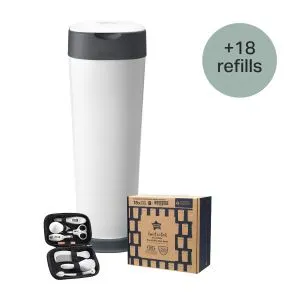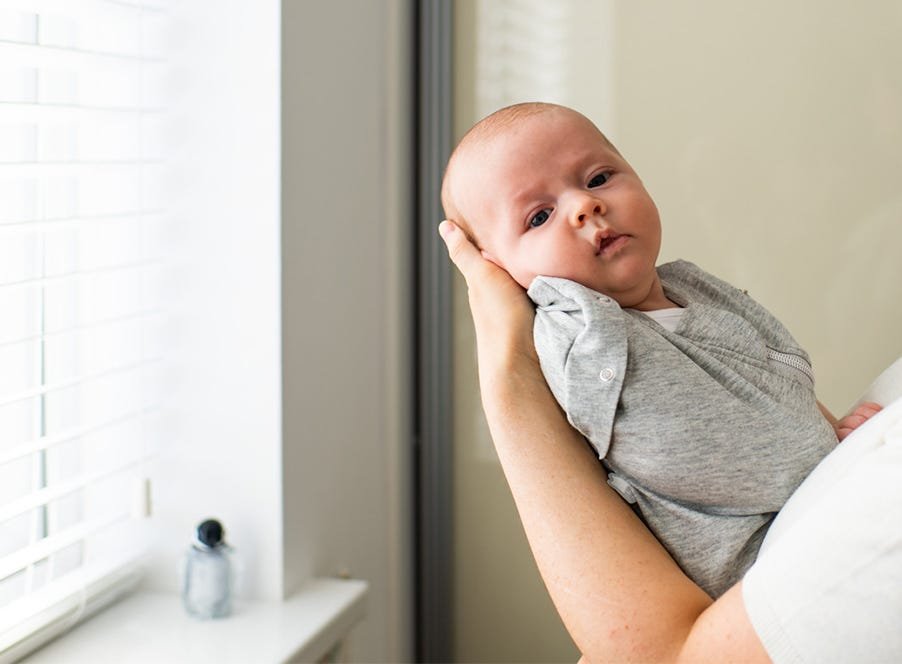
Ultimate XL Nappy Disposal Bundle with 18 Refills
Bundle & Save 40%
Subscription orders can be cancelled at anytime. Free delivery on all subsequent subscription orders. Find out more about subscriptions.
They’re easy and fuss free
Your products are automatically sent to you
You save up to 10% when you sign up for a subscription
You can cancel at any time
How to Swaddle a Newborn? Super Simple Swaddle Guide

Bringing your newborn home from the hospital can be daunting, especially if you're a new parent. One of the biggest challenges you'll face is getting your baby to sleep soundly and safely. That's where swaddling comes in.
According to NCT, one in five babies in the UK are swaddled within the first few weeks of their life, but if you're new to swaddling, it can be a bit intimidating. That's why we've put together this comprehensive guide to walk you through everything you need to know about swaddling your newborn.
From the benefits of swaddling to step-by-step instructions on how to swaddle your baby, we've got you covered.
Swaddling is simply wrapping a baby gently so they can’t move their arms. It has been used in variations all over the world since 4000 BC.
To a baby, being swaddled can replicate the feeling they had of being in the womb. It gives babies a sense of comfort and security and has been proven to improve the quality of sleep in young babies. It helps to reduce the startle or Moro reflex that can disturb your baby’s sleep.
Let's look at the different ways to swaddle a baby.
The safest way to swaddle a baby is to do it from birth rather than suddenly introducing swaddling at the vulnerable age of three months when the SIDS risk is highest. If you do decide to give swaddling a go, you should follow these guidelines to keep your newborn safe:
Yes, swaddling is safe if you follow safe sleeping and hip-friendly swaddling guidance for babies. Safe baby sleeping advice is to always lay your little one down to sleep on their back and avoid front or side positions for sleep, especially if your baby is swaddled.
You should stop swaddling your baby when they show the first signs of rolling over.
No necessarily, the choice to swaddle or not is very personal and there's no right or wrong path. Some babies love being swaddled while they sleep and find it soothing, while others prefer to have their arms out loose.
Swaddling can be helpful if your baby:
Every baby is different and there's no set time when you should stop swaddling. Many babies enjoy being swaddled for several months, while others will become frustrated by their restricted movement from as early as two or three months of age.
The most important factor to consider is safety and your baby's movement. Swaddled babies should not sleep on their front, so when your baby can roll onto their front, you should stop swaddling. You should be especially cautious when they're not yet able to roll back onto their back.
Yes, it is safe to swaddle babies during the warmer summer months, but you should swaddle them in a lightweight, breathable fabric to prevent overheating. Our 1.0 and 0.2 togs are perfect for swaddling in warmer months.
Your baby might struggle to go to sleep when you first stop swaddling them. It will understandably feel strange to them if they're used to falling asleep easily with it on.
The main key to helping your baby sleep without a swaddle is not to have the process of being swaddled as your baby’s only sleep trigger. From an early age, you should introduce some other sleep signifiers at bedtime to let them know that sleepy time is coming. These will help them to settle even though the swaddle has gone. Sleep triggers can include:
For a few days before planning to remove the swaddle completely, you should stop swaddling your baby’s arms and just wrap their legs and body up to chest height. At the same time, you should gradually loosen the tension of the swaddling.
If you feel that your baby misses the feeling of pressure from the swaddle, you place your arm gently across their upper body. As they start to settle, you can then take your arm away. And although you might have a night or two of less settled sleep, your baby will soon get used to the change.
All Tommee Tippee swaddle bags can be machine washed at 40°C. They can be hung out to dry or tumble-dried on a low setting. As with all cotton goods, we have designed our swaddles to allow for up to 5% shrinkage. If your child has any allergies and you wish to wash your swaddle at 60°C, you should allow for a little more shrinkage.
We recommend that you wash dark colours separately for the first few washes. We also recommend that you wash your swaddle with a detergent that's free from bleaching agents to retain the original colours.
Explore the Range
If you don’t have a specially designed swaddle bag, you can swaddle your baby using a muslin cloth.
As soon as your baby shows signs that they're learning to roll over or they can already roll over, you should transition them away from swaddling.